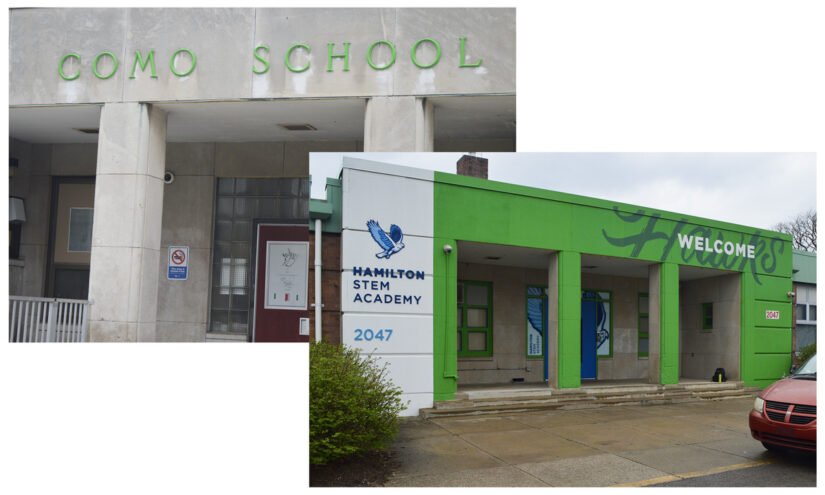During this summer, a team of students from MIT embarked on a journey to the sou …
Columbus Considers Closure of Schools Due to Declining Enrollment and Deteriorating Facilities
Emma Wordsmith

In Columbus, Ohio, a stark contrast between two schools showcases the challenges Columbus City Schools are facing. Como Elementary School and Hamilton STEM Academy, both built in 1954 and less than 2 miles apart, highlight the disparity in conditions.
Como Elementary School, in need of major updates, retains its original floor tiles that contain asbestos, non-translucent plexiglass windows, and exposed wires running through cinder-block walls. While the school has received air conditioning and a new playground, it struggles with overcrowding, accommodating only 243 students out of a capacity of 400.
In sharp contrast, Hamilton STEM Academy underwent a $3.5 million renovation, featuring noise-reducing flooring, new windows and furniture, and modern cubbies in classrooms. Despite these improvements, the school operates at two-thirds capacity, with around 400 students in a building designed for 575.
The challenges extend beyond individual schools, with most of the district’s 113 schools constructed before 1975 facing rapid deterioration. Columbus City Schools allocate $544,000 per year for each school’s facilities and maintenance, exceeding the national average by $86,000.
Just like many urban districts, Columbus has experienced a significant decline in student enrollment over the years, dropping from 110,000 in the 1970s to 45,400 today. The rise of charter schools, with a surge in voucher applications from 26,400 to 91,100, has further added to the challenge.
Columbus’s educational landscape reflects its struggles, as the district’s schools were rated the lowest in central Ohio with an overall rating of 2 out of 5 stars. To address these issues, officials have proposed school closures and redrawing attendance boundaries, a measure that has previously failed to yield positive results.
Recent efforts involving a $100 million levy and a task force to evaluate school facilities signal the district’s commitment to finding sustainable solutions. However, past experiences indicate that closing schools, a divisive decision, presents complex challenges.
Despite the uncertainties, stakeholders like Jim Negron remain optimistic about the district’s future. As Columbus emerges as the fastest-growing city in the U.S., with significant investments in manufacturing and housing, the potential for growth offers a glimmer of hope.
Yet, concerns linger among educators and union representatives like John Coneglio, who question the impact of school closures on the community. The risk of losing students to charter schools underscores the need for a comprehensive plan to address the district’s evolving needs.
As the task force deliberates on potential closures, community engagement and thoughtful consideration of factors like student well-being and academic outcomes will be pivotal in shaping Columbus City Schools’ trajectory.
Looking ahead, the district faces tough decisions, but the resolve to navigate these challenges and build a stronger educational foundation for future generations remains steadfast.


